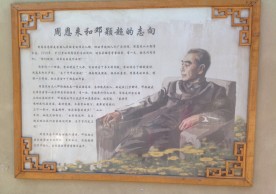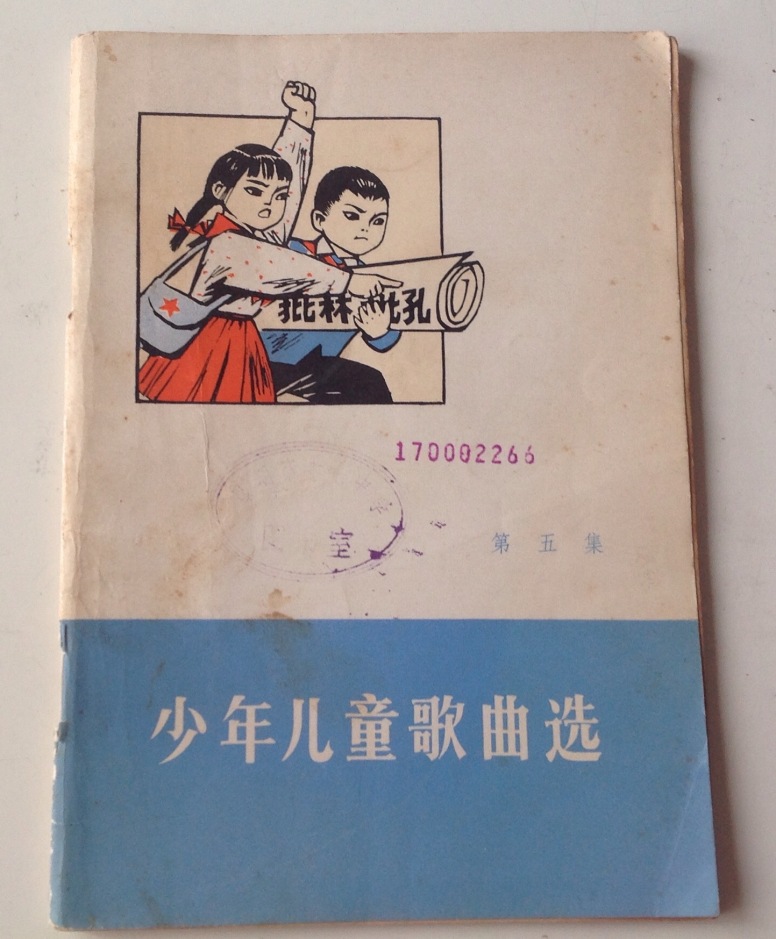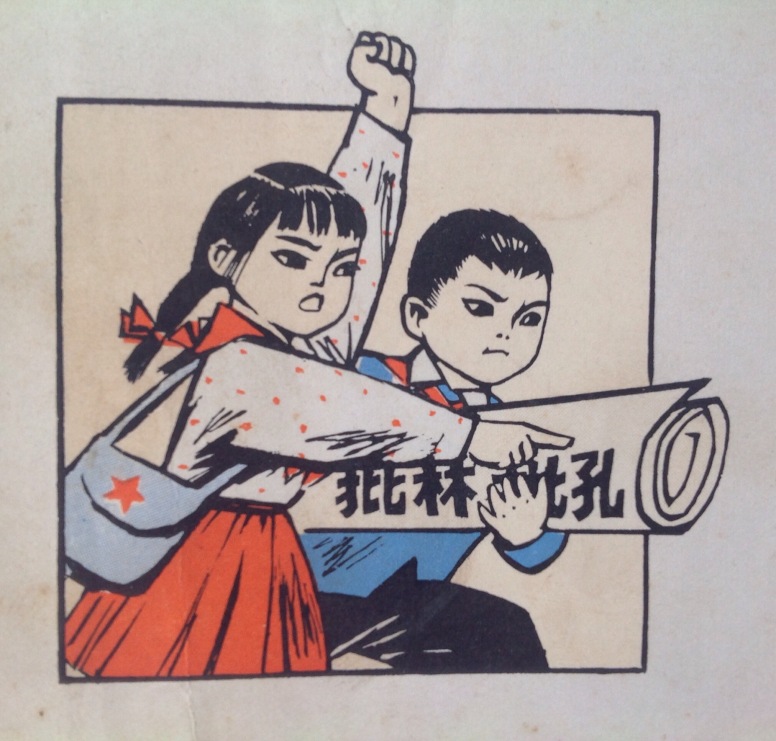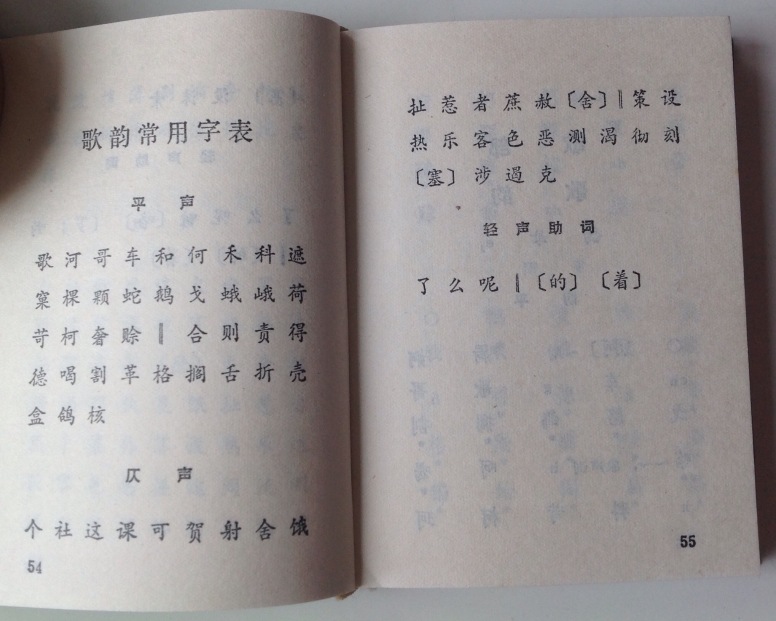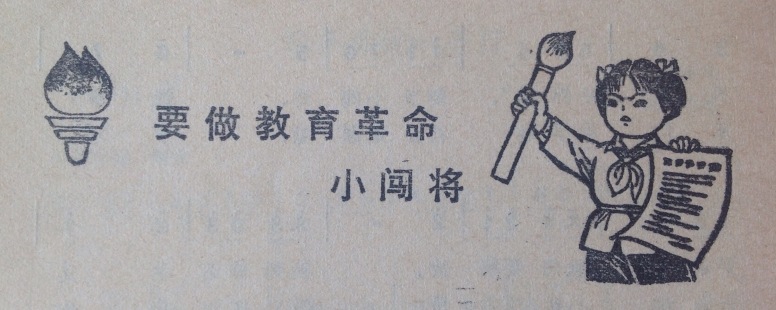 Following on from yesterday’s post, here are two more translated songs from “Selected Songs for Young Children Volume 5”, published by People’s Literature Publishing House in June 1974 (full reference: 《少年儿童歌曲选》(第五集),人民文学出版社,1974年). The translation is a little crude – unfortunately, there is no way to capture the rhythm of the original Chinese.
Following on from yesterday’s post, here are two more translated songs from “Selected Songs for Young Children Volume 5”, published by People’s Literature Publishing House in June 1974 (full reference: 《少年儿童歌曲选》(第五集),人民文学出版社,1974年). The translation is a little crude – unfortunately, there is no way to capture the rhythm of the original Chinese.

红小兵批林批孔打冲锋
战鼓响咚咚,怒火烧在胸,我们红小兵齐呀齐行动。
批判会,大字报,口诛笔伐猛进攻。
反复辟,反倒退,红小兵批林批孔打冲锋。
嘿!嘿!
红小兵呀,齐行动,批林批孔打冲锋。
反复辟,反倒退,红小兵批林批孔打冲锋。
In the fight to Criticise Lin, Criticise Confucius, Little Red Guards lead the charge
The drums of battle ring “dong”, “dong”, the fire of fury burns in our chests. We Little Red Guards, together, together we strike.
Criticism meetings, big-character posters, ferocious assaults with word and pen.
Oppose reversal, oppose restoration, in the fight to Criticise Lin, Criticise Confucius, Little Red Guards lead the charge.
Hey! Hey!
We Little Red Guards act together, leading the attack on Lin Biao and Confucius.
Oppose reversal, oppose restoration, in the fight to Criticise Lin, Criticise Confucius, Little Red Guards lead the charge.


要做教育革命小闯将
红旗在校园飘扬,阳光照亮了课堂,我们红小兵立场坚定,要为教育革命贡献力量。
不做 “小绵羊”,要当小闯将,流毒要肃清,思想要解放。
批判修正主义教育路线,坚持无产阶级政治方向。
沿着毛主席的革命路线,我们好好学习天天向上。
我们好好学习天天向上。
我们奔向农村工厂,嘹亮歌声传遍了四方,我们红小兵朝气蓬勃,要为教育革命贡献力量。
开门办学校,社会做课堂,学习有方向,心红斗志昂。
学习工农兵的光辉榜样,树立为人民服务的崇高思想。
沿着毛主席的革命路线,我们好好学习天天向上。
我们好好学习天天向上。
Take the lead in the education revolution
The Red Flag flutters in campuses, the sun brightens the classrooms. We Little Red Guards are resolute: we must commit our strength to the education revolution.
Don’t be hesitant, be in the vanguard. Get rid of pernicious remnants and liberate your thoughts!
Criticise the revisionist line in education, uphold the way of proleterian politics.
Following Chairman Mao’s revolutionary line, we study to improve every day.
We study to improve every day.
We rush to the countryside and to the factories, spreading our loud and clear message in all directions. We Little Red Guards are full of youthful spirit: we must commit our strength to the education revolution.
Study for all, society as a classroom, study with a purpose, with red hearts and a will to fight.
Learn from the glorious example of workers, peasants and soldiers, and make serving the people take root.
Following Chairman Mao’s revolutionary line, we study to improve every day.
We study to improve every day.

 Of particular importance is that in two cases (the bold characters) a quote from Mao was printed incorrectly: in one case, a period has been printed instead of a comma; in the other, three characters have been ommitted. My impression is that this book was compiled hastily with the typsetter under pressure to cull materials from national and provincial newspapers and magazines.
Of particular importance is that in two cases (the bold characters) a quote from Mao was printed incorrectly: in one case, a period has been printed instead of a comma; in the other, three characters have been ommitted. My impression is that this book was compiled hastily with the typsetter under pressure to cull materials from national and provincial newspapers and magazines.